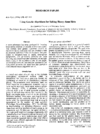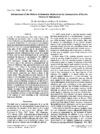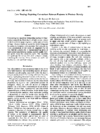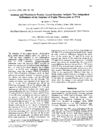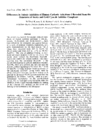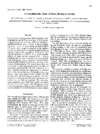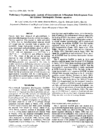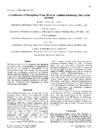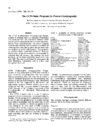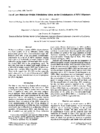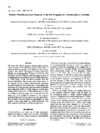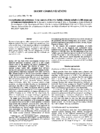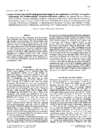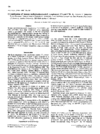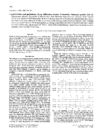issue contents
September 1994 issue

Cover illustration: The overall folding of the salmon trypsin molecule. Courtesy of A. O. Smalas and A Hordvik.
research papers
A novel procedure has been developed using genetic algorithms to search for heavy-atom sites in a difference Patterson function.
Methods are proposed whereby information from one part of a crystal structure that has been determined can be used to help determine the structure of the remainder. Applications to mutants of phage T4 lysozyme are described.
The ferricytochromes c of horse, rat and of two rat-protein mutants, crystallized at low ionic strength from a solution of PEG, have space group P212121. A novel application of macro-seeding was employed.
Paths of high density are traced by lines connecting peaks to passes. Picture complexity approximates that of α-carbon models.
The structure of a copper protein, plastocyanin, has been refined using synchrotron X-ray data recorded at 173 K. The accuracy and precision of the structure are deduced from a comparison between two independent refinements based on the same set of low-temperature data.
Structures of human carbonic anhydrase I complexed to two anionic inhibitors have been refined at 2 Å resolution and reveal differences in the binding in the active site leading to an understanding of the mode of inhibition of the enzyme.
Horse-spleen apo-ferritin, the iron-storage protein, has been crystallized with Sn-protoporphyrin. The complex belongs to the F432 space group. In the final structure, protoporphyrins free of metal are observed in special positions, on the twofold axes of the ferritin molecules.
Glyceraldehyde 3-phosphate dehydrogenase from an extreme thermophile was crystallized in a large unit cell containing two tetramers (300 kDa) in the asymmetric unit. The orientations of the two tetramers were determined using the Patterson-correlation method.
The 1.6 Å Co,Ca-concanavalin A structure is the highest resolution lectin structure so far reported. The Co-, Ni-, Cd- and native conconavalin A structures are compared in the context of metal-ion properties, and at the saccharide-binding site.
A preliminary X-ray diffraction study is reported of the homo-tetramers of hemoglobins II and III of the symbiont-harboring clam Lucina pectinata.
The CCP4 program suite, a collection of programs that can be used for macromolecular structure determination by X-ray crystallography, is described.
Based on crystallization trials of 26 RNA molecules, PEG400 was found to be the most successful precipitant. Crystals were obtained of 6 RNA oligomers, a DNA-RNA hybrid, transfer RNA and a self-cleaving RNA using PEG400 as precipitant or co-precipitant.
The refined structure of a murine IgGl-λ, Fab fragment is used to evaluate the combining site predicted using the canonical-structure approach. A new structure is described for the LI loops of murine immunoglobulin A chains.
PDB reference: 1gig
short communications
Four active centers (three iron-sulfur clusters and one Ni atom) are approximately lined up at a distance of ca 13 Å, which seems reasonable if they are connected with the electron-transfer chain.
Human methylamine-treated complement C3 and C3b have been crystallized using ammonium sulfate as precipitant. Maximum diffraction observed is 7.7 Å at cryogenic temperatures using synchrotron radiation.
Crystals and preliminary X-ray diffraction data of ribosomal protein Ll4 from B. stearothermophilus have been obtained. It is proposed that the structure of L 14 will verify that this protein belongs to a family of structurally related RNA-binding proteins.


 journal menu
journal menu









